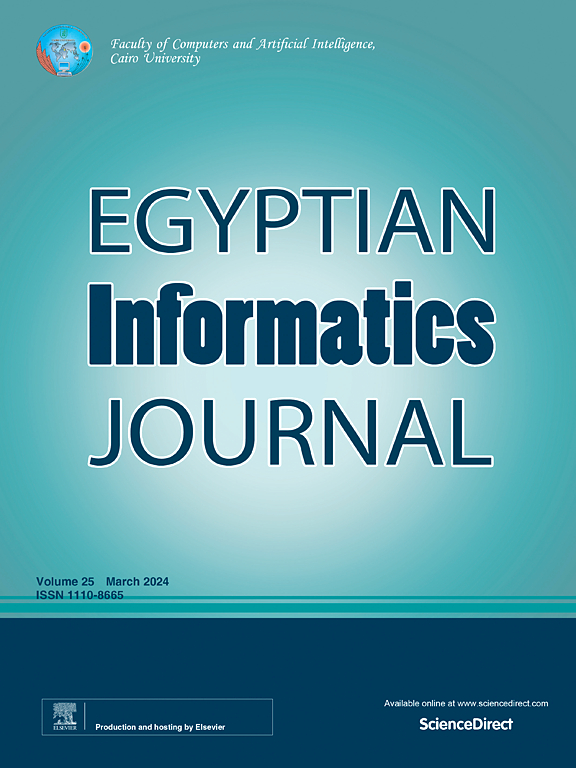A novel approach for efficient resource allocation in 6G V2V networks using neighbor-aware greedy algorithm and sweep line model
IF 4.3
3区 计算机科学
Q1 COMPUTER SCIENCE, ARTIFICIAL INTELLIGENCE
引用次数: 0
Abstract
Advances in vehicular networks are attracting the attention of academic institutions and corporate groups who see them as a means of facilitating smart cities, autonomous driving, and the Intelligent Transportation System (ITS). This system can display highly dynamic features because of its portability and speed. The growing number of applications is placing pressure on 6G vehicle networks’ Quality of Service (QoS). A new era of customized user experiences, significantly increased road safety, and vehicle-to-vehicle (V2V) communication is quickly approaching with the introduction of connected autonomous vehicles. To achieve this ambitious goal, a greatly improved vehicle-to-everything (V2X) communication network is required, one that can facilitate massive data interchange rapidly, extremely reliably, and with low latency between vehicles and Road Side Units (RSUs). V2X is vulnerable to resource depletion because of its low processing capacity, which can result in harmful delays in communication between V2V, V2V and RSU, and RSU and ITS. This work analyses a sweep line algorithm that utilizes the concept of a sweep area to address issues in Euclidean space for enhanced V2V communication. In our research, we present an Enhanced Neighbor Node Associated Greedy-based Resource Distributed V2V Model with Sweep Line Model (NNAGbRD-V2V-SLM) for secure resource handling and management in V2V and V2X communication. The resource distribution strategy for V2V users participating in the exchange of information is based on the greedy method. The recommended algorithm determines which resource is optimal for each V2V user by taking a multi-level approach. The proposed model shows better resource management efficiency when compared to the current approach.
基于邻居感知贪婪算法和扫描线模型的6G V2V网络资源高效分配新方法
汽车网络的进步引起了学术机构和企业集团的关注,他们将其视为促进智能城市、自动驾驶和智能交通系统(ITS)的手段。该系统具有可移植性好、速度快等特点,具有高度的动态性。越来越多的应用给6G车载网络的服务质量(QoS)带来了压力。随着互联自动驾驶汽车的推出,定制化用户体验、显著提高道路安全性和车对车(V2V)通信的新时代正在迅速到来。为了实现这一雄心勃勃的目标,需要一个大大改进的车联网(V2X)通信网络,该网络可以在车辆和路侧单元(rsu)之间快速、极其可靠、低延迟地促进大量数据交换。由于V2X的处理能力较低,容易导致资源枯竭,从而导致V2V、V2V与RSU、RSU与its之间的通信出现有害的延迟。这项工作分析了一种扫描线算法,该算法利用扫描区域的概念来解决欧几里得空间中的问题,以增强V2V通信。在我们的研究中,我们提出了一种增强的基于邻居节点关联贪婪的资源分布式V2V模型和扫描线模型(NNAGbRD-V2V-SLM),用于V2V和V2X通信中的安全资源处理和管理。参与信息交换的V2V用户资源分配策略基于贪心方法。推荐的算法通过采用多级方法确定对每个V2V用户来说哪种资源是最优的。与现有方法相比,该模型具有更好的资源管理效率。
本文章由计算机程序翻译,如有差异,请以英文原文为准。
求助全文
约1分钟内获得全文
求助全文
来源期刊

Egyptian Informatics Journal
Decision Sciences-Management Science and Operations Research
CiteScore
11.10
自引率
1.90%
发文量
59
审稿时长
110 days
期刊介绍:
The Egyptian Informatics Journal is published by the Faculty of Computers and Artificial Intelligence, Cairo University. This Journal provides a forum for the state-of-the-art research and development in the fields of computing, including computer sciences, information technologies, information systems, operations research and decision support. Innovative and not-previously-published work in subjects covered by the Journal is encouraged to be submitted, whether from academic, research or commercial sources.
 求助内容:
求助内容: 应助结果提醒方式:
应助结果提醒方式:


